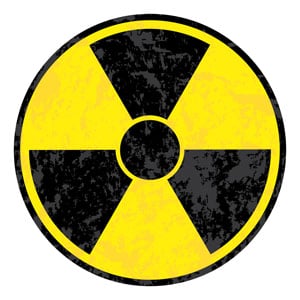I found this interesting news in the Science webpage relationated to health and lifestyle. This news is about the usual effects of radiation in humans and other very exiciting and interesting items of radiation such as it effects on seawater or food. This notice will answer all the questions you have about this terryfing problem. If i were you i would take a coffe and sit in front of the laptop readig this news, i hope you enjoy it!
Q&A: Health effects of radiation exposure
How does radiation have an impact on health?
Radioactive
materials decay spontaneously to produce ionising radiation, which has
the capacity to cause significant damage to the body's internal
chemistry, breaking the chemical bonds between the atoms and molecules
that make up our tissues. Damage to the DNA of a cell is particularly
important.
The body responds by trying
to repair this damage, but at high doses it is too severe or widespread
to make repair possible, leading to short-term acute health effects.
There is also a danger of mistakes in the natural DNA repair process, which can lead in the long-term to cancer.
Regions
of the body that are most vulnerable to acute radiation damage include
the cells lining the intestine and stomach, and the blood-cell producing
cells in the bone marrow.
The extent of the damage caused is dependent on how long people are exposed to radiation, and at what level.
What are the immediate health effects of exposure to radiation?
Exposure
to high levels of radiation - above one gray (the standard measure of
the absorbed dose of radiation) - can result in radiation sickness,
which produces a range of symptoms.
Nausea and vomiting often begin within hours of exposure, followed by diarrhoea, headaches and fever.
After
the first round of symptoms, there may be a brief period with no
apparent illness, but this may be followed within weeks by new, more
serious symptoms.
At higher levels of
radiation, all of these symptoms may be immediately apparent, along with
widespread - and potentially fatal - damage to internal organs.
Exposure to a radiation dose of four gray will typically kill about half of all healthy adults.
For
comparison, radiation therapy for cancer typically involves several
doses of between one and seven gray at a time - but these doses are
highly controlled, and usually specifically targeted at small areas of
the body.
A sievert is a gray weighted
by the effectiveness of a particular type of radiation at causing damage
to tissues, and is used to measure lower levels of radiation, and for
assessing long-term risk, rather than the short-term acute impact of
exposure. There are 1,000 millisieverts (mSv) in a sievert.
People
are exposed on average to around 2mSv of radiation a year from the
natural environment, although there is considerable variation in this
dose between individuals.
In the UK,
the legal limit for radiation exposure from sources such as nuclear
plants for members of the public is 1mSv a year, based on
recommendations from the International Commission on Radiological
Protection.
 For emergencies, the upper
limit is set higher - 5mSv or more - but these figures are set
conservatively, at levels far below those that would significantly raise
health risks.
For emergencies, the upper
limit is set higher - 5mSv or more - but these figures are set
conservatively, at levels far below those that would significantly raise
health risks.
For the whole news, click here
